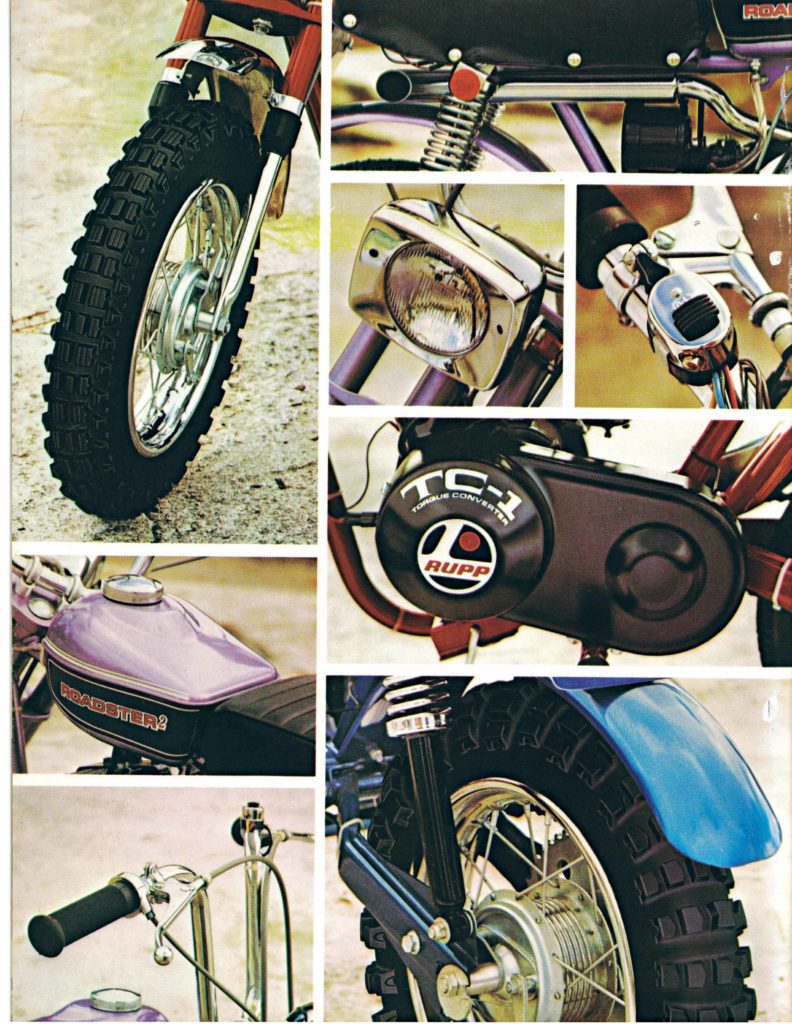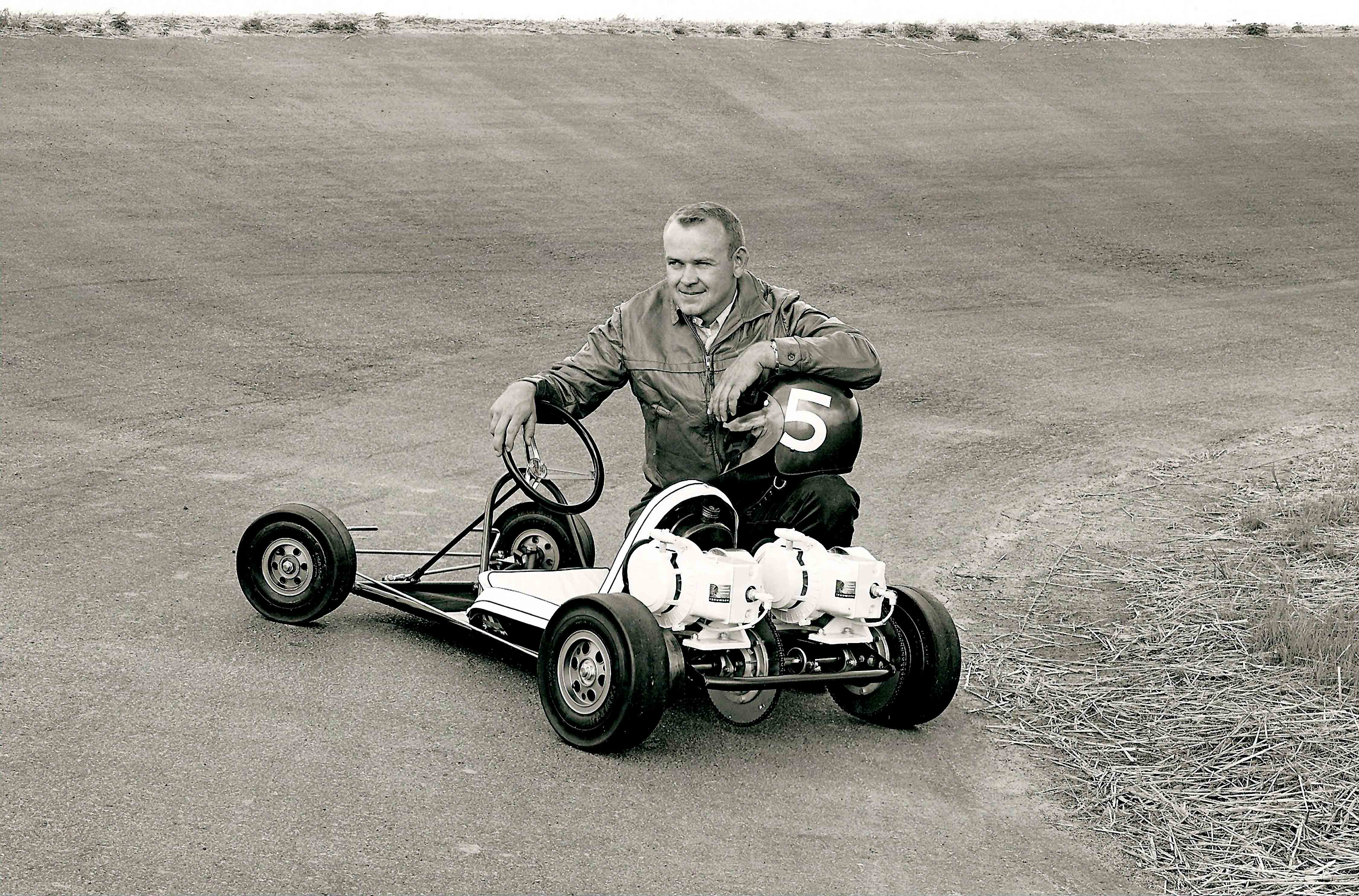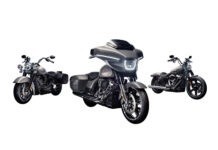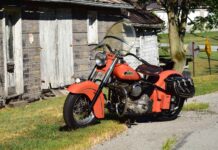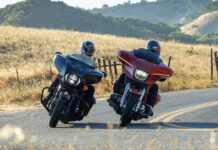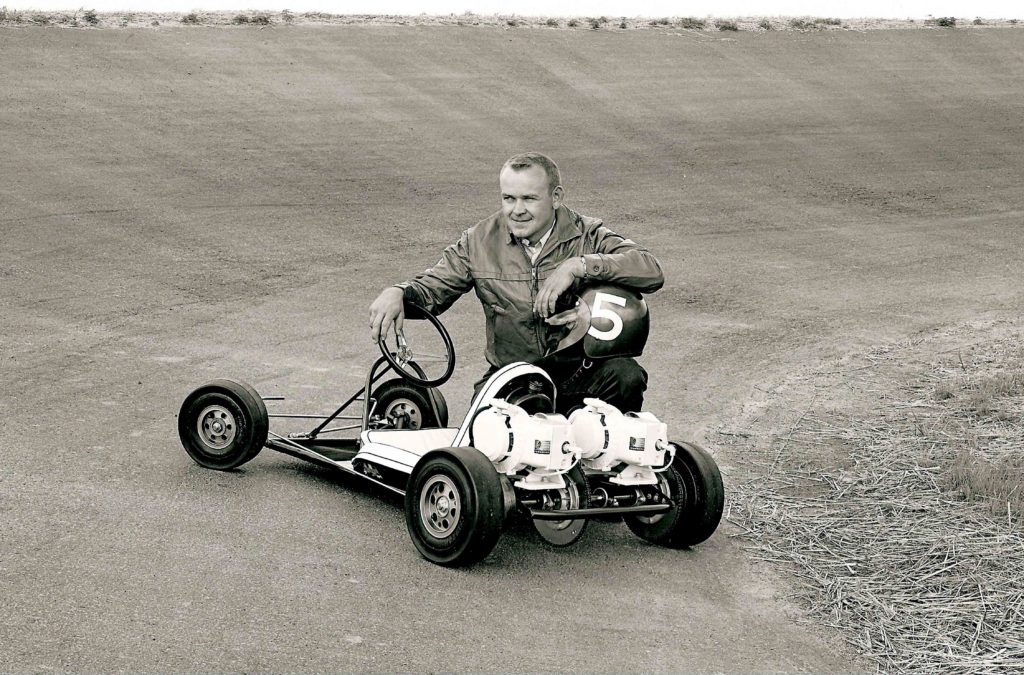
Nearly 50 years ago, Mickey Rupp’s minis were the Cadillac of traditional minibikes – two-wheeled magic carpets for thousands of kids big and small, and an entré into American-flavored motorcycling
Words by Mitch Boehm
Photos: Paul Zisser, Jim Kise, Buddy Baker, Rupp archive
If you’re a baby-boomer motorcyclist (or a Gen-Xer or Millennial with a decent sense of motorcycle history) you remember them well. In fact, if you were a kid or teenager or young adult during the late ’50s, 1960s or early ’70s you probably lusted after one or two, or better yet, got to actually ride or own one.
We’re talking minibikes here, and not the Japanese-invasion stuff that came a bit later, bikes like the Honda Mini-Trail/Z50s and Trail 70/CT70 or Suzuki Trailhopper, as great as they were. We’re talking tube-framed, solid-wheeled, single-speed, friction-braked and Tecumseh-powered (or Briggs and Stratton-powered) torque converter minibikes, the ones you saw advertised in the back of Boys Life magazine, built yourself using an old lawnmower engine or bought at a local hardware store to terrorize the neighborhood on.
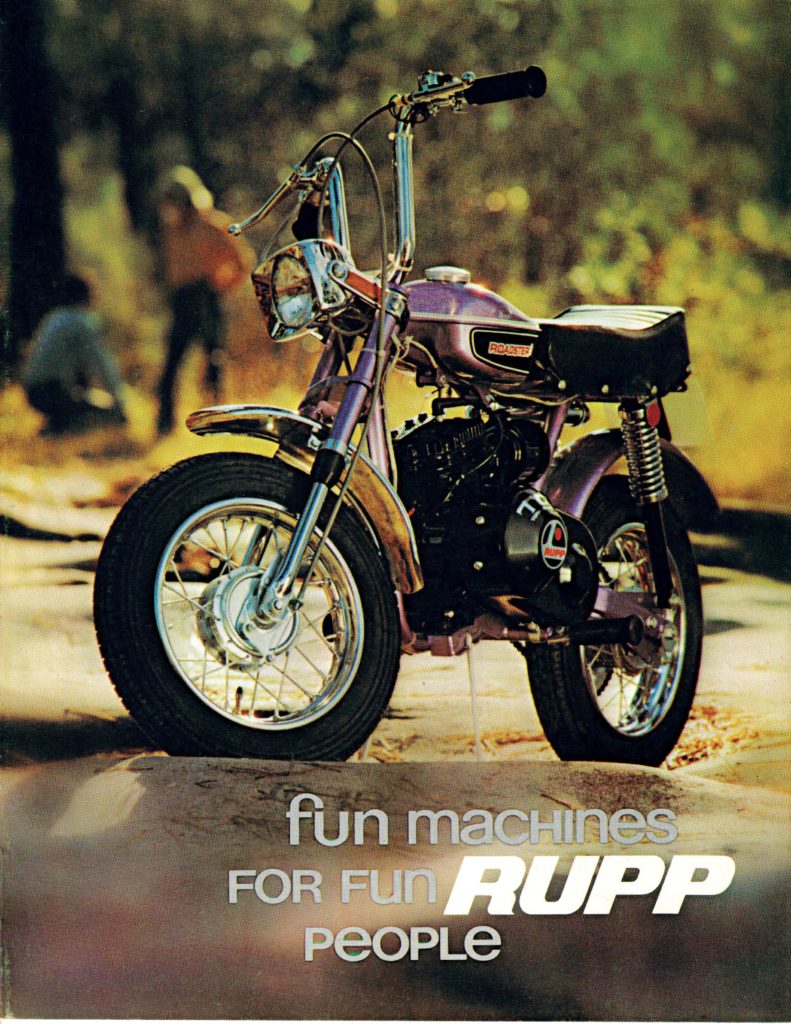
And the Cadillac of that Great Minibike Revolution of the 1960s? That’d be a Rupp, for sure. Just ask Rupp owner and collector Paul Zisser of Branchburg, New Jersey. “They’ll have to bury me with my Rupp Roadster when the time comes!”
Zisser probably isn’t serious – his ear-to-ear grin gives him away. But speak with him for a few minutes about his favorite subject – a beautifully restored 1971 Rupp Roadster/2 – you’re suddenly not quite so sure. “When I was 11,” he says, “I fell in love with the things, right up until I got my first car. Then, for the next 25 years, nothing – until I found an old Roadster and restored it. I love looking at it, riding it, being near it. The look and sound have a powerful hold on me!”
Zisser’s not alone, of course. There are thousands of like-minded enthusiasts out there, guys and gals who grew up during the ’60s and ’70s and lived through the crazy 1960s.
“When you’re young,” says fellow Rupp fan and restorer Buddy Baker, “and you get exposed to something as cool and exciting as motorcycling, it affects you strongly. And the minibikes of the day imprinted themselves on our 10-year-old brains like nothing else.”
Rupp Industries was a big part of that epic minibike movement. Launched in 1959 in Mansfield, Ohio, by then-24-year-old Herbert E. “Mick” Rupp, who began building go-karts in his basement for himself and, later, for friends, Rupp Industries grew into a recreational vehicle dynamo during the 1960s, building karts, minibikes, snowmobiles and all manner of 3- and 4-wheel conveyances. By 1970, Rupp employed over 400 people and recorded sales of nearly $30 million – quite an accomplishment for the 34-year-old entrepreneur, who, a decade earlier, was a one-man show working out of his basement.
“At 33,” wrote noted journalist Brock Yates in 1969, “Mick Rupp is a rising tycoon – a man they talk about in Cleveland and Columbus as one of the hottest young industrialists in the state of Ohio, and a powerful trendsetter in the booming [powersports] business.”
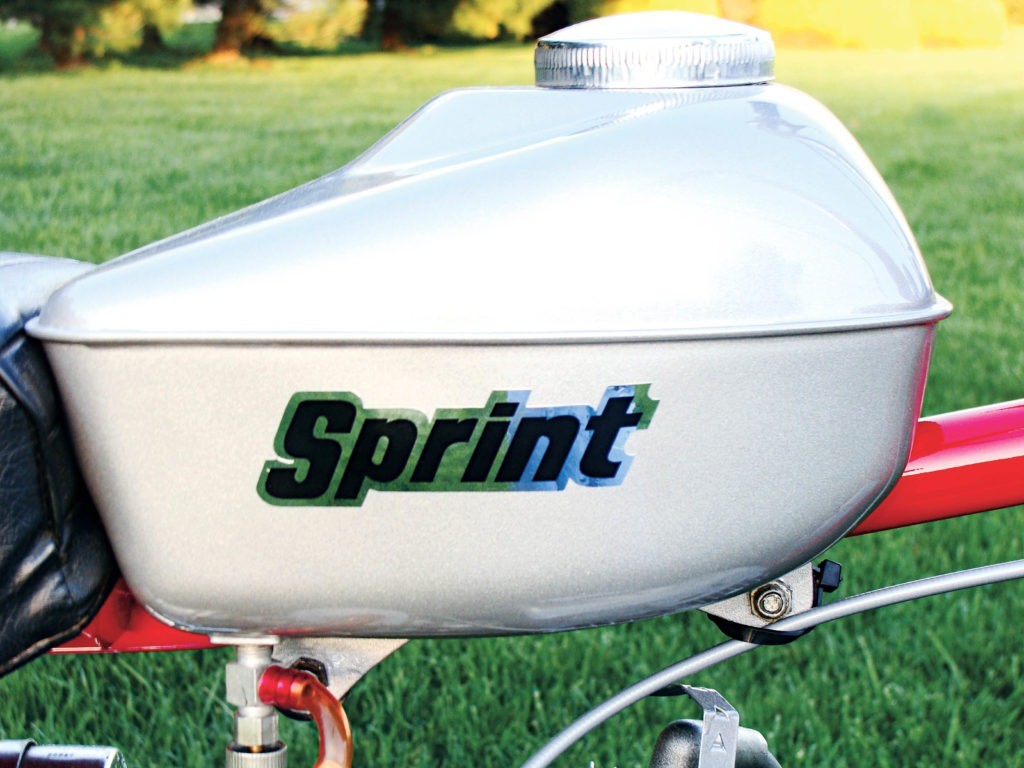
Rupp’s early minis were basic machines: hardtail frames made of steel tubing, four-stroke pull-start engines and tiny wheels – the standard formula for numerous minibike companies during the ’60s. But over the years Rupp innovated, adding front and rear suspension to certain models and, later, going to larger wheels and more powerful Tecumseh engines, which vaulted bikes like the Hustler, Enduro, Roadster/2 and famed Black Widow into real minibike territory, where they competed reasonably well versus more advanced Japanese minis like Honda’s SL70 and, later, the SL100.

The head- and taillight-equipped Roadster morphed in similar fashion over the years, going from a small-wheel/small-frame mini to a larger-framed, larger-wheeled machine in ’70 and then again in ’71, when it gained the Roadster/2 designation and even larger wheels. Marginally street-legal, the Roadster/2 was Rupp’s top-of-the-line minibike, eclipsed only by the rare and dirt-worthy Black Widow, which was available only in ’71 and which featured more power and a trick del Orto carburetor and straight exhaust. “The Widow was the Holy Grail of minis,” remembers Baker. “If you had one, you were on top of the world!”
“The Roadster/2 really was the Cadillac of minibikes,” says Jim Kise, co-owner of blackwidowmotorsports.net, a Rupp parts and restoration business, “and Rupp sold many, many thousands of the things. They were pretty advanced minis, and kids and adults all over the country scooped them up. Rupp did a good job marketing them, too. The company sold them through a wide variety of outlets –snowmobile dealers, hardware stores, tractor lots, etc. And you could get parts anywhere. There was good brand recognition from the use of Michigan’s Tecumseh engines, too; folks knew and trusted that brand, and it rubbed off. Guys our age – 50 to 75 – are way into the nostalgia thing these days, and these bikes bring it all back. They’re reasonably inexpensive, too. For a couple grand or three, you can buy an old Rupp and restore it. Much cheaper than a car project!”

Technically, the Roadster/2 is a relatively simple design despite its semi-roadgoing pretentions. The steel frame is a single downtube/top-tube design that incorporates a beefy swingarm and steering stem. Dual shocks out back and an internal spring telescopic fork up front garnered a ‘heavy duty’ description from Rupp copywriters, while drum brakes laced to chromed, 12-inch wheels – fitted with semi-knobby ‘trials’ tires – slowed things down. The 172cc Tecumseh four-stroke routed its four horsepower to the rear wheel through a torque converter – dubbed ‘TC-1’ by Rupp – and a dual-sprocketed jackshaft.

A chromed muffler with spark arrestor sent burned hydrocarbons rearward beneath a naugahyde-covered saddle that cozied up against a small steel fuel tank. Both body (tank and rear fender) and frame got brightly colored paint – purple, red, blue or green for 1971 – while a chrome handlebar, headlight and front fender provided some sizzle. All in all it was a good-looking and sturdy little package, and all for about $300.
“This is the feature-packed top-of-the-line Rupp for 1971,” claimed the ’71 full-line brochure about the Roadster/2. “Designed for the Rupp rider who likes to stay out front both in looks and performance, the Roadster/2 has about everything you could want in a compact cycle.”
Buddy Baker, whose father worked for Rupp from ’67 until the company closed for good in ’78 due to financial mismanagement and bankruptcy (Mick Rupp sold the company in ’73 to Joe Hrudka of Mr. Gasket fame), remembers those early ’70s years well. “We lived close to the plant in Mansfield,” Baker says, “and I’d visit the factory pretty often with my dad. I remember the smells of the manufacturing and assembly areas like it was yesterday. It was crazy then; I remember my dad mentioning they were doing everything they could to get bikes out the door, and that demand was huge. ‘Ass crazy’ is how he described it. With all the advertising they were doing, all the magazine stories that were appearing, all the word-of-mouth from owners along with the general excitement around motorcycling at the time, Rupp sold everything it could build. It was crazy for sure; it just took off.”
Zisser’s purple Roadster/2 (photographed for this story) has been restored using a good number of NOS parts and some careful repainting and refurbishing. “Everything’s as it should be,” says Zisser, “though you can see that the left side engine cover decals are a little worn. I left them like that intentionally because very few restored bikes have originals; they were in pretty good shape and I wanted a little something to remind everyone that this bike is nearly 40 years old!”
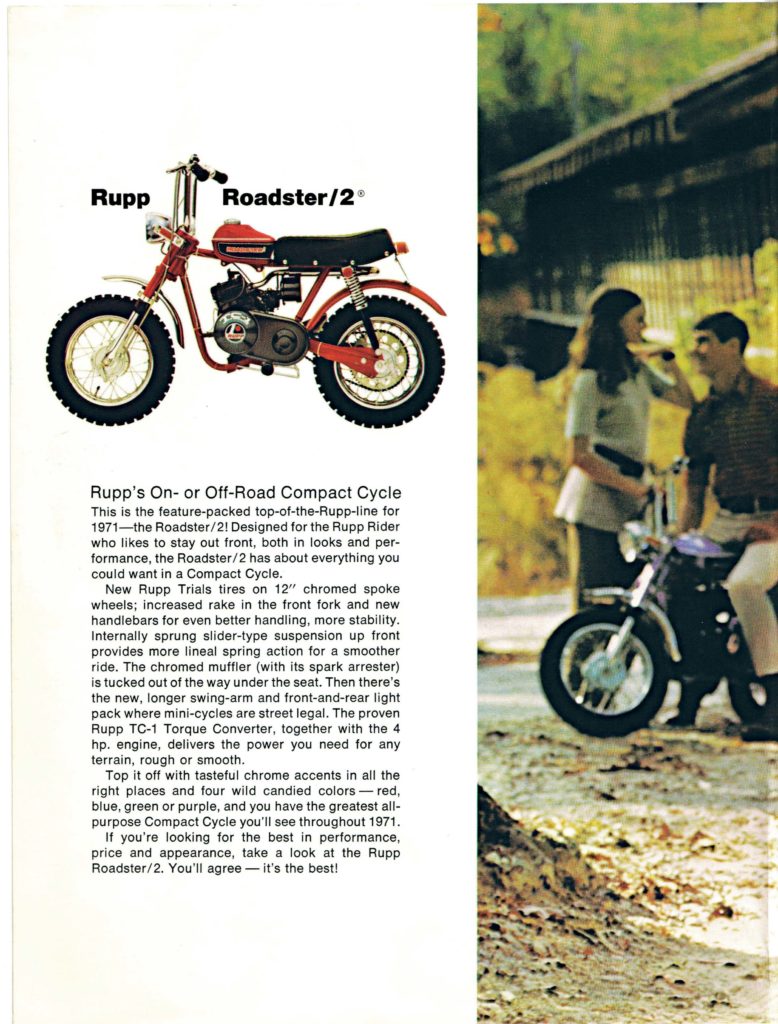
Rupps – Roadsters, Black Widows, TT500s, Enduros, MX-80s, etc. – and a whole range of minibikes from back in the day, from traditional designs to more advanced Japanese minis, are in some ways the purest form of time capsule for many baby boom motorcyclists. Whether we owned and rode them, or simply saw and lusted after them as they were ridden in the back trails or around the neighborhood or campground, they imprinted in our adolescent minds as strongly as anything in our lives.
More than that, Rupps and other American-designed and -built minibikes led to a lifetime of motorcycle ownership and enjoyment for many thousands of fans over the decades, many of which remained loyal to American-made Harleys (and, more recently, Victorys and Indians) through the years. Think a good portion of today’s Harley and Indian owners rode Rupps and other tube-framers back in the day? You bet they did.
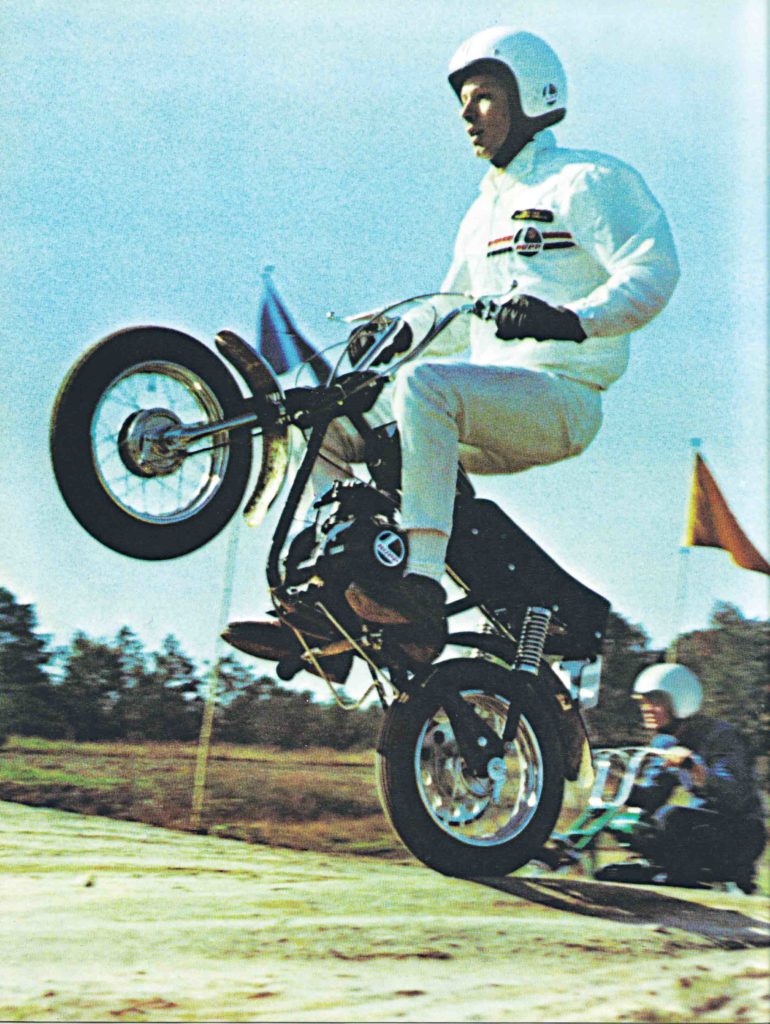

“Mickey Rupp built and sold the things of every adolescent boy’s most fervent dreams,” wrote Craig Fitzgerald for Hemmings Motor News in 2009. “Go-karts, snowmobiles, and, what paid the freight for Rupp almost every year of its existence, minibikes. Between 1968 and 1971, Rupp was a phenomenally successful company, and in that time sold nothing with an engine displacement larger than about 200cc. At the time, it was a brand to be reckoned with.”
These days, Mickey Rupp, now 83 and long retired, keeps busy refurbishing an old family farm back in Mansfield. Rupp built a successful high-end fishing gear business in Florida after selling Rupp Industries, and just recently sold it to his son and son-in-law. We spoke to him back in 2012 and asked if he was surprised about the renewed attention his minis have generated over the last several years.
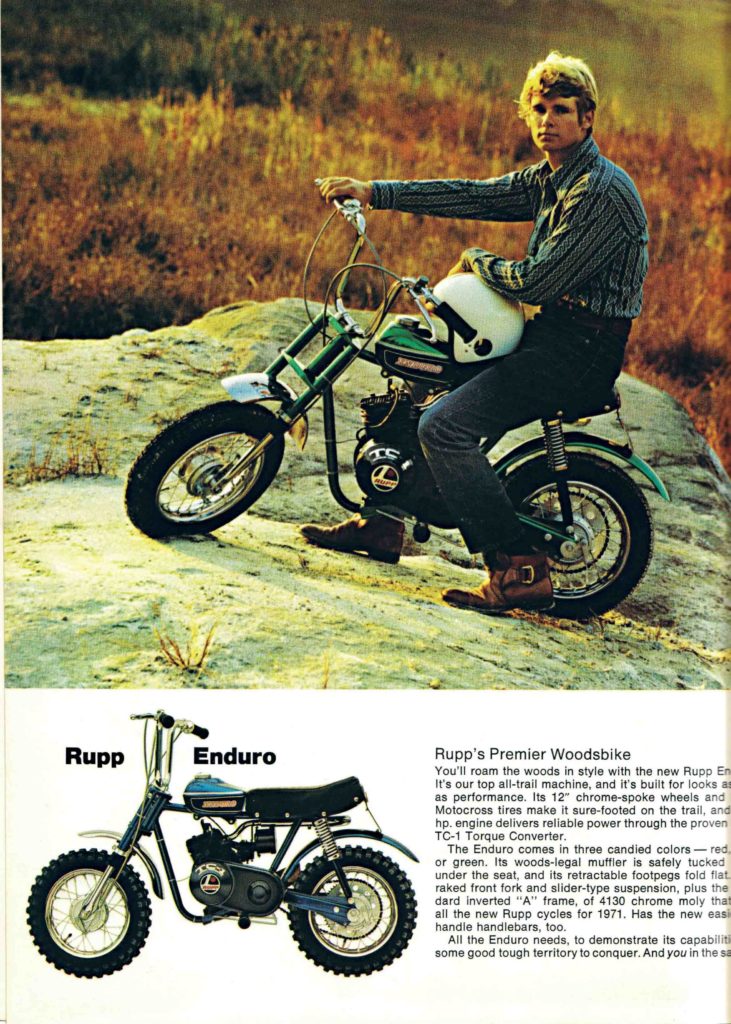
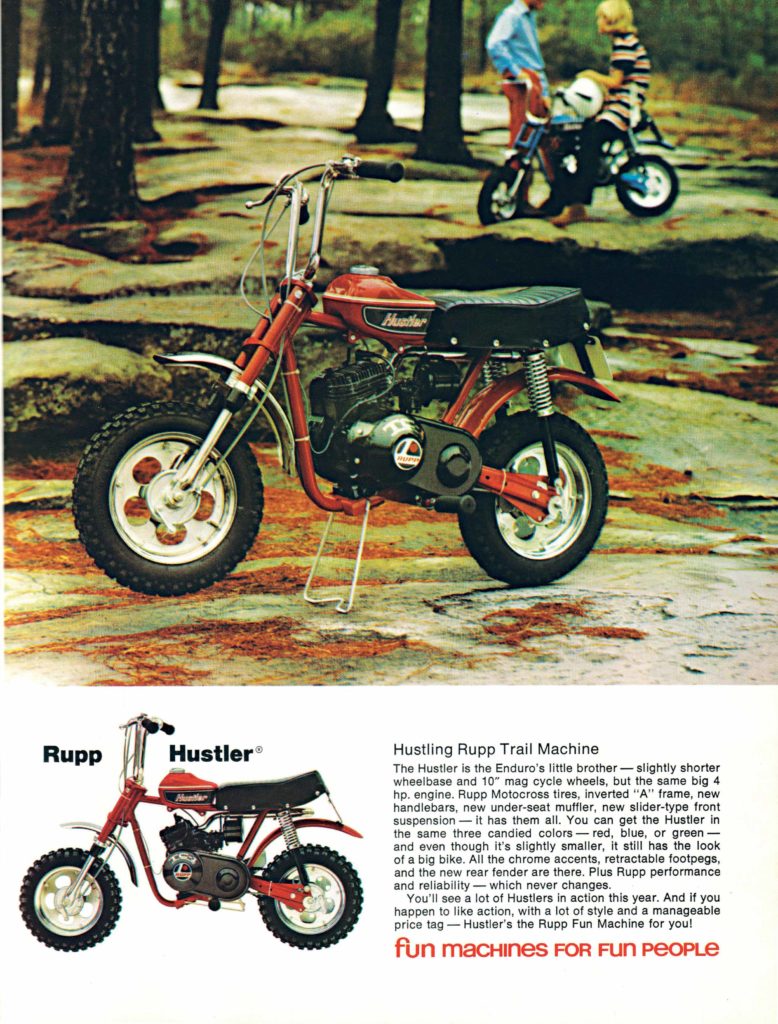
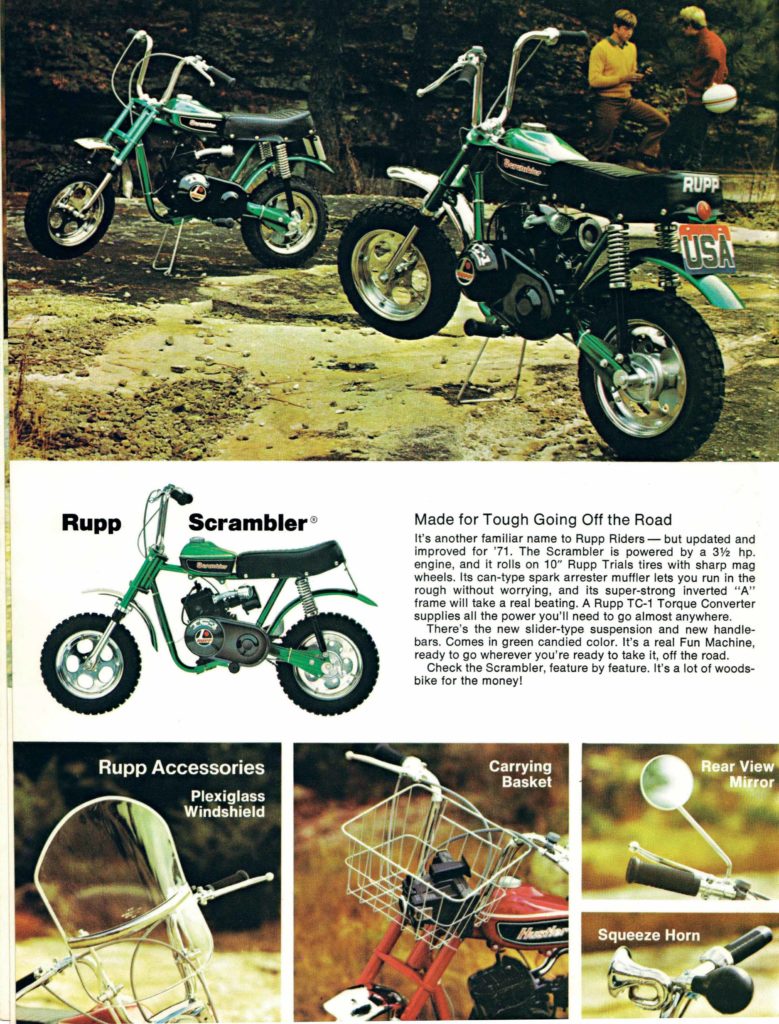
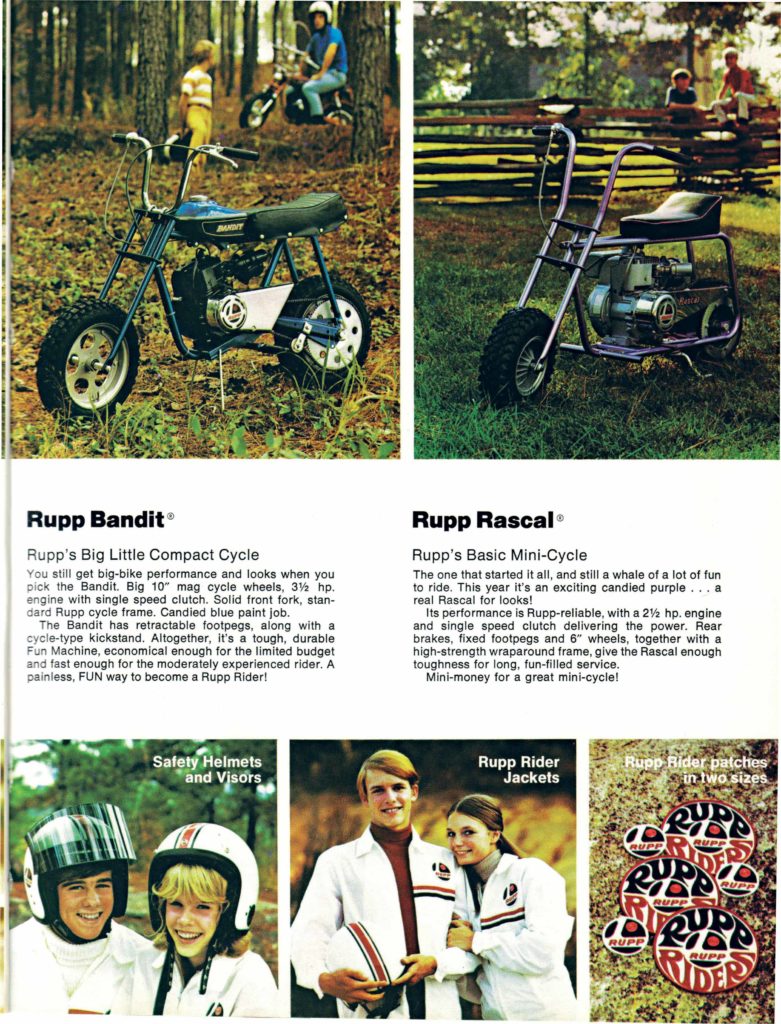
“What’s surprising,” he told me, “is what some people will pay for a nicely restored Rupp minibike! It’s amazing. Yeah, the whole Rupp Industries experience flew by. It was fast and furious, for sure. They were great years. We took it all for granted, I think. What kept us going was the great crew we assembled; we hired smart folks. In the beginning, I ran the company. But once we took it public and I was flying to New York, dealing with financial people and analysts, the company ran me!”
As fast and furious as it all was, there’s no doubt folks like Zisser, Kise and Baker – and many thousands of other Rupp fans – are very, very glad that Herbert E. ‘Mickey’ Rupp decided to launch his kart and minibike business 60-some long years ago.
Time capsules with this much Americana and emotional pull are hard to come by these days.
Editor’s Note: This story originally appeared in Moto Retro Illustrated years ago and has been updated slightly from the original.
